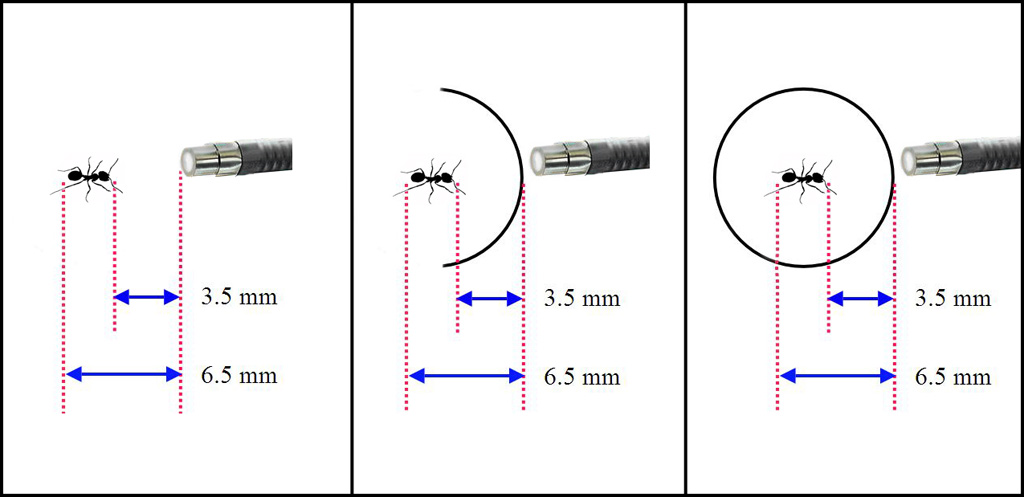In my head I had it like this, if you take two imaginary cylindrical diffusers to shoot a 3mm bug, the first being 1cm radius and the second being 10cm radius, with the inverse law being what it is, light falloff over say 1mm on the 1cm radius is far more than 1mm on a 10cm radius. As in 1mm is a massive 10% of 1cm but only 1% of 10cm. and since we're actually talking the square of this it's even more pronounced. Hope that makes some sense...
Hhmm... This stuff is a bit tricky to discuss. What you've said does "make sense", but it also overlooks some important aspects, and the difference can drag you off in unproductive directions. Let me explain...
It's critical to recognize that the inverse square law directly applies to point sources, but not to extended sources like diffusers. To calculate what happens with those, you need to integrate the inverse square law across the whole diffuser, and when you do that, some unexpected behavior turns up.
It turns out that the light intensity inside a uniformly lit sphere is the same everywhere -- not brighter near the surface as you might think based on the inverse square law. The same is true for a uniformly lit infinite plane and a uniformly lit infinite cylinder. With a finite plane or cylinder, or less than a full sphere, the illumination is not completely uniform, but it's still a lot more uniform than you'd think based on inverse square. So, if evenness is your thing, the important aspect is to light the cylinder itself evenly. Diameter does have an effect, but it's far less important than simple "inverse square" would suggest.
I'm struggling a bit, trying to figure out what's the most productive advice to give.
Charlie's comments are of course dead on. If the illumination is not even, then closer is brighter, approaching inverse square if the illumination is small. That can be a powerful friend or enemy.
On the other hand, there are a lot of other sources for uneven illumination, and in my experience most of them have to do with angles. With your
wasps and
mineral specimens, my guess is that almost all of the unevenness has to do with the angles that the light is hitting the surface, as opposed to the surface's distance from the diffuser.
So, in terms of advice for what I think you're interested in (getting some specific effect with a 3D subject), I'm still going with angles as the most important thing to consider. But I could be wrong about that, and I'd be interested to see more examples of what you're getting and what you don't like about them.
--Rik


